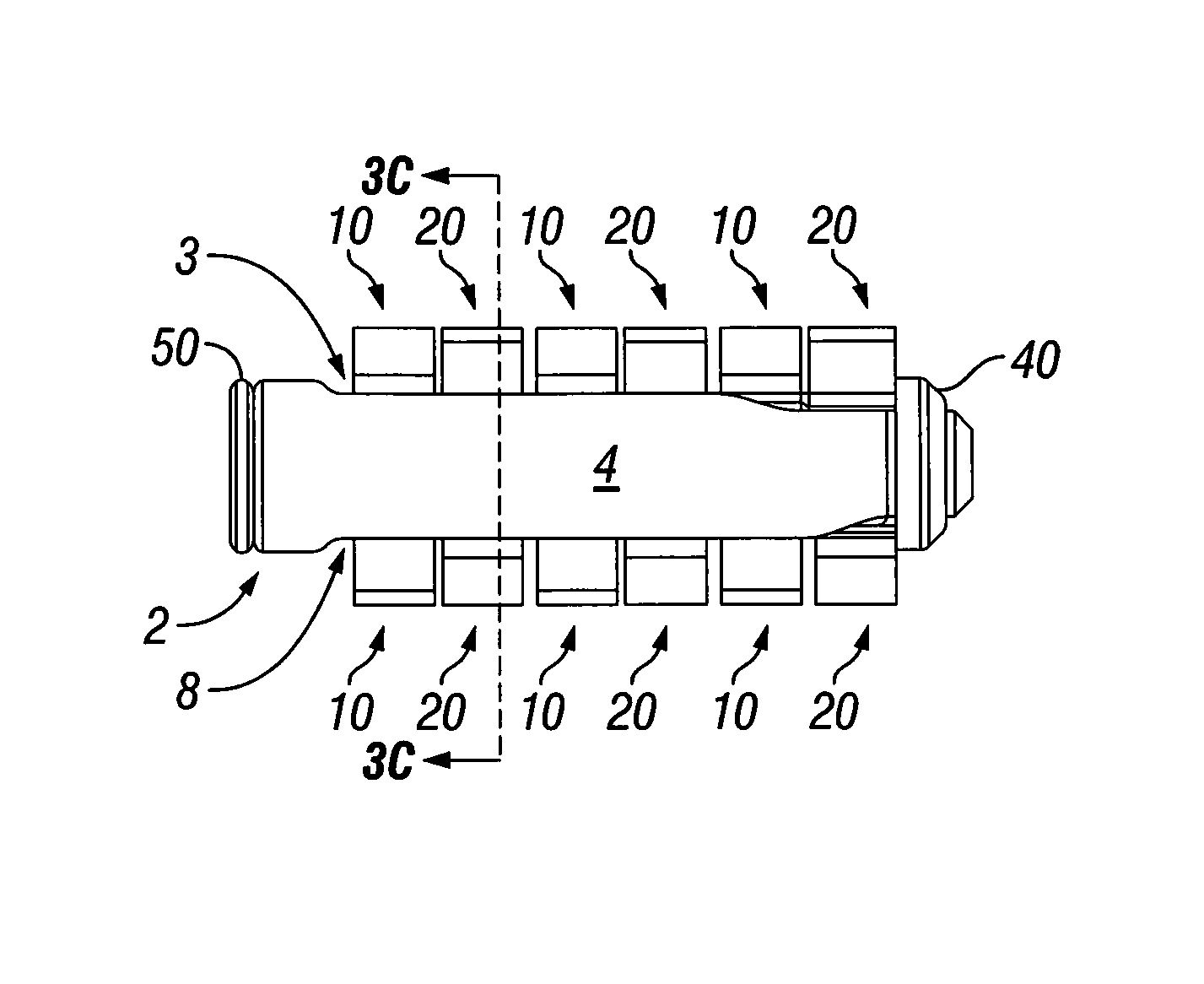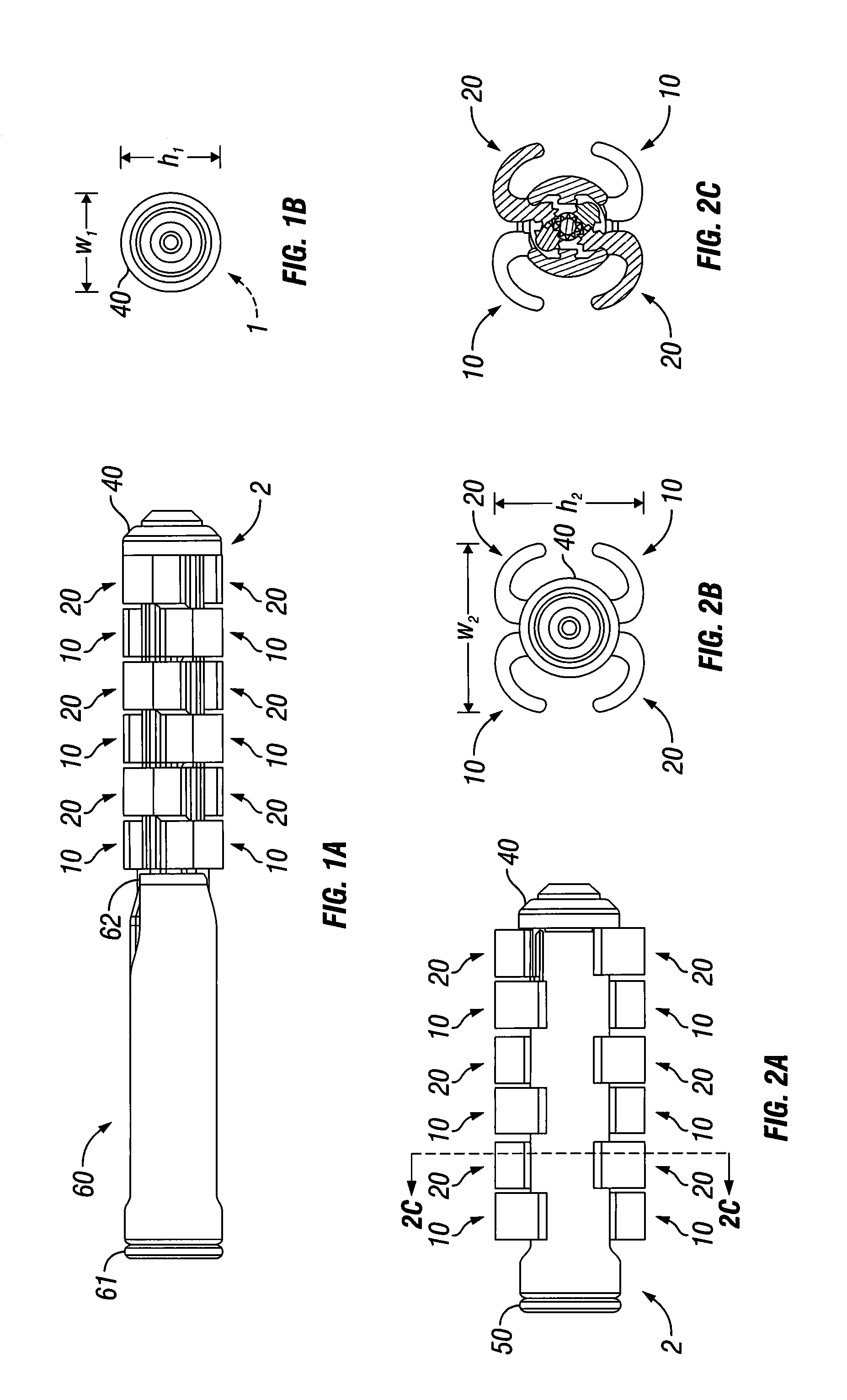Expandable intervertebral spacer and method of posterior insertion thereof
a technology of intervertebral spacers and spacers, which is applied in the field of intervertebral spacers and surgical methods for inserting intervertebral spacers, can solve the problems of further injury to other components of the spine, damage to nerve roots, etc., and achieve the effect of increasing the overall height and width of the spacer
- Summary
- Abstract
- Description
- Claims
- Application Information
AI Technical Summary
Benefits of technology
Problems solved by technology
Method used
Image
Examples
Embodiment Construction
[0042]Referring now to the figures of the drawing in detail, there is seen an expandable intervertebral spacer 1. The expandable intervertebral spacer 1 is typically inserted in a retracted state as shown in FIGS. 1A-1B into an intervertebral space. Once inserted into the intervertebral space, a width w and height h of the expandable intervertebral spacer 1 can be expanded as shown in FIGS. 2A-4F. The construction and operation of the expandable intervertebral spacer 1 are detailed below.
[0043]The expandable intervertebral spacer 1 includes a cylindrical body 2. The body 2 has a right side surface 4 and a left side surface 5. A superior slot 3 is formed in the body 2 at a superior position on the wall of the body 2. An inferior slot 8 is formed in the body 2 at an inferior position on the wall of the body 2. Arms 10, 20 deploy through the inferior and superior slots 3 and 8. As seen in FIG. 4D, the left and right side surfaces 4 and 5 have fins 6 and 7 formed on an inner surface of ...
PUM
 Login to View More
Login to View More Abstract
Description
Claims
Application Information
 Login to View More
Login to View More - R&D
- Intellectual Property
- Life Sciences
- Materials
- Tech Scout
- Unparalleled Data Quality
- Higher Quality Content
- 60% Fewer Hallucinations
Browse by: Latest US Patents, China's latest patents, Technical Efficacy Thesaurus, Application Domain, Technology Topic, Popular Technical Reports.
© 2025 PatSnap. All rights reserved.Legal|Privacy policy|Modern Slavery Act Transparency Statement|Sitemap|About US| Contact US: help@patsnap.com



